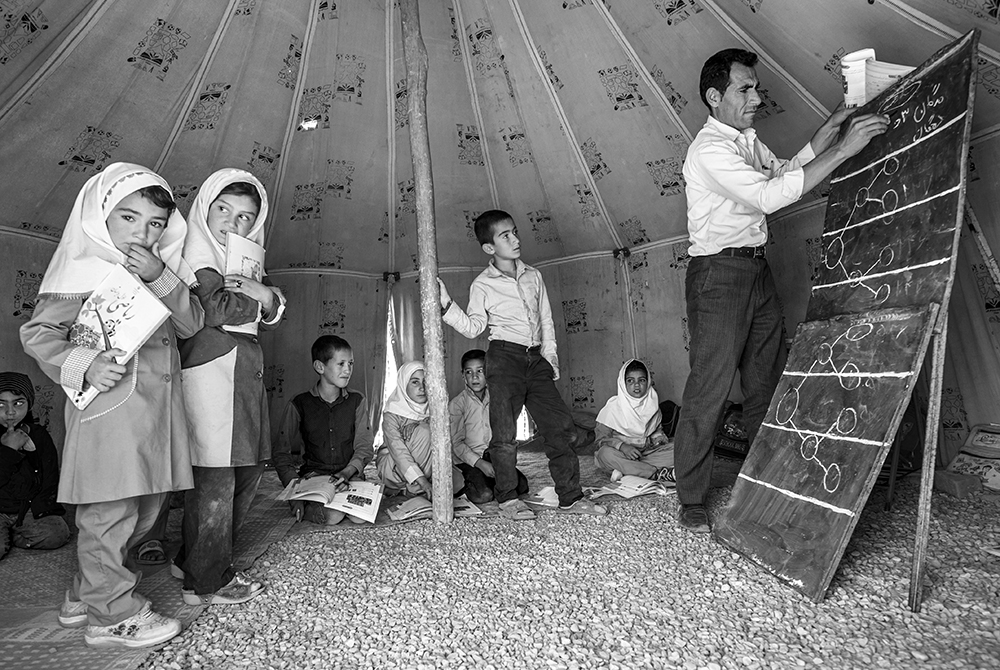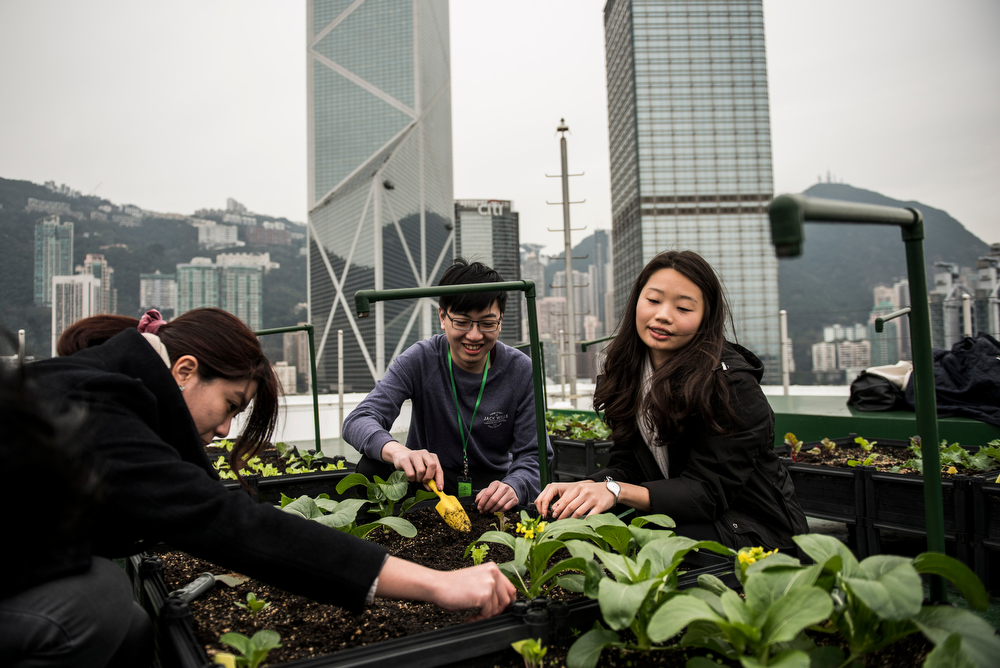The thinking behind coffee table book with a difference, The Other Hundred Educators, about grass-roots teachers worldwide
/Hong Kong-based think tank chief Chandran Nair set out to challenge the idea that education is about going to an Ivy League school or getting an MBA by focusing on little-known teachers helping communities everywhere
By Kate Whitehead
Glossy “top 100” coffee table books will feature the world’s most beautiful people or the most fashionable, perhaps the best golf courses. And then there’s the Forbes rich list. But what about those at the other end of the scale, the 100 poorest?
Chandran Nair was curious, and the founder and CEO of the Global Institute for Tomorrow, an independent Hong Kong-based think-tank, created a photo book project, The Other Hundred.
The first book, published in 2013, contrasted the lives and achievements of 100 ordinary people from around the world with celebrities on the rich and famous lists. Nair and his team contacted photojournalists with the question – who are the poorest hundred? – and asked for stories.
“We wanted to create a book of photography that went beyond exotic images – we’ve all seen the shot of the beautiful Afghan woman with piercing eyes in the shadow of a destroyed building. We thought someone local might see things differently,” says Nair.
The team received thousands of photos from 130 countries. Many of the well-known photographers didn’t understand the aim – this wasn’t about a photo of a poor child with a running nose eating from a plate on the floor.
“It’s shallow to think of the poor as victims. People do lead very profound lives with a lot less,” says Nair.
Chandran Nair’s The Other Hundred Educators a book on pioneers who are making a difference
And between the photo stories were eight essays from writers around the world. The book was a success, and the second was released in 2015, The Other Hundred Entrepreneurs. Again, the aim was to challenge ideas, in this case that an entrepreneur is a tech guru who had made his first million dollars by the age of 28 and wants to save the world.
“The images we got back confirmed the reality that most entrepreneurs are small to medium-sized enterprises, they’ve never met an investment banker, don’t do IPOs and are just interested in making a living and doing a good day’s work,” says Nair.
The third in the series, due for release this month,is The Other Hundred Educators, which tells the stories of 100 little-known educators through images accompanied by short narratives.
“The trigger for this book was to challenge the idea that education is about going to an Ivy League school or getting an MBA from one of the top-ranked schools. Education is more profound than that,” says Nair.
He shares in the book’s foreword that, although his classroom education was important, what counted more was the diversity he was exposed to growing up in a south Indian family in multicultural Malaysia.
Nair hopes the book will question who is an educator and what it means to be educated. The stories are all different. Take Yaghoubi Liaghat, who teaches the children of nomads in southern Iran’s Fars province. He teaches his 12 students Farsi, maths, history, literature and science in a tent, and takes them to and from classes in his own car.
Chandran Nair - a real thinker living in our midst
From India, there is 61-year-old Mohd Alamgir, sitting on railways tracks in Calcutta holding an informal class with young children. We learn that, thanks in part to his 35 years working in the slum district, that 90 per cent of people here are literate and 8 per cent of its school students, mostly girls, go on to graduate from university.
It is significant that educators in the photos are named. This isn’t about photographers breezing into a far-flung village, snapping a shot and moving on. The photographers are mostly local and are briefed to capture people they know or have seen, keeping things personal.
“We insist that the image cannot be one of a voyeur. A lot of top photographers are voyeurs. They are technically brilliant, but they don’t know the person. They must know the story of an individual. So we are also challenging the prima donna photographer,” says Nair.
From Uganda, there is a photo of a prisoner at the maximum security Kirinya prison in Jinja teaching primary school biology. The blackboards propped up against the filthy prison walls show a detailed illustration of the digestive system.
The submission from Hong Kong is of an organic farm on a Sheung Wan rooftop. The urban farming project is led by Rooftop Republic, which in addition to setting up and maintaining the urban farms also gives workshops on how to grow food at home. As with most of the submissions, there are interesting facts – this one shows a chart of the world’s top food importers, with Hong Kong coming in just two ranks below Canada.
From Armenia and Azerbaijan to Zimbabwe, Nair hopes to show that education is not only a constant journey of learning, but also that although many people can’t get the education the rest of us take for granted, they are not necessarily deprived.
Hong Kong-based chief executive has tomorrow on his mind
“One of the themes running through the book is to stop feeling sorry for people. Do things for people, but don’t forget that although people are poor they are still getting on with their lives,” he says.
The book will be available from local bookshops and at Amazon.com, and will be given as corporate gifts at conferences. Nair hopes it will serve as a conversation starter.
From Armenia and Azerbaijan to Zimbabwe, Nair hopes to show that education is not only a constant journey of learning, but also that although many people can’t get the education the rest of us take for granted, they are not necessarily deprived.
Hong Kong-based chief executive has tomorrow on his mind
“One of the themes running through the book is to stop feeling sorry for people. Do things for people, but don’t forget that although people are poor they are still getting on with their lives,” he says.
The book will be available from local bookshops and at Amazon.com, and will be given as corporate gifts at conferences. Nair hopes it will serve as a conversation starter.
The photojournalists are paid about US$350 (HK$2,700) but getting the money to some can be difficult. Nair needed help from a niece in Melbourne to get payment to a teacher in Australia’s remote Northern Territory who wrote an essay on Aboriginal education. It was money well spent, and Yalmay Yunupingu’s voice adds to the broad picture of what education looks like around the world, way beyond Oxford, Cambridge and US Ivy League universities.
“When governments tell us we can’t teach our children how to read and write in their own language, we feel as if a knife has gone into our body, then kept going deeper and deeper,” Yunupingu writes.
This article appeared in the South China Morning Post print edition as: How the other half gives
Source: http://www.scmp.com/culture/books/article/2078659/thinking-behind-coffee-table-book-difference-other-hundred-educators































































